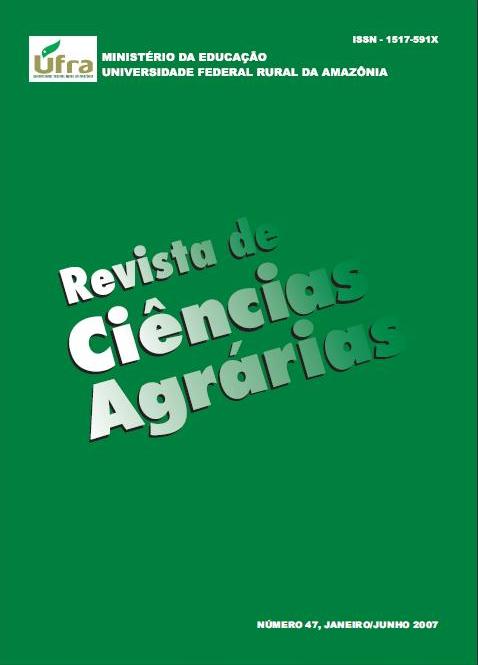NATURAL RESISTANCE OF WOOD A wood-destroying fungi under laboratory conditions
Abstract
The research aims to assess the natural resistance of the seven species of wood fungi
wood decay in laboratory conditions. Species tested were leucaena (Leucaena leucocephala (Lam.) De Wit.), Blond-brown (Cordia trichotoma Vell. Former. Steud.), Jurema in (Mimosa tenuiflora (Willd.) Poir.), Quince-black (Croton sonderianus Muell. Arg.), thrush (Mimosa caesalpiniifolia Benth.)-Indian neem (Azadirachta indica A. Juss.) and teak (Tectona grandis Lf.). Of each species body-of-proof 2.54 x 2.00 x 1.00 cm were removed, with the largest dimension in the direction of the fibers, in four positions from pith to bark. The samples were subjected for 98 days to fungi Postia placenta (Fr.) MJ Lars. & Lomb. or Polyporus fumosus Pers. ex Fries. Woods jurema in and thrush were the most resistant, while neem and quince the most likely. Samples from the outside of the trunk suffered the greatest losses in mass. P .placenta attacked more severely tested woods.
Downloads
Authors retain copyright and grant the Journal the right to the first publication. Authors are encouraged to and may self-archive a created version of their article in their institutional repository, or as a book chapter, as long as acknowledgement is given to the original source of publication. As the Journal provides open access to its publications, articles may not be used for commercial purposes. The contents published are the sole and exclusive responsibility of their authors; however, the publishers can make textual adjustments, adaptation to publishing standards and adjustments of spelling and grammar, to maintain the standard patterns of the language and the journal. Failure to comply with this commitment will submit the offenders to sanctions and penalties under the Brazilian legislation (Law of Copyright Protection; nº 9,610; 19 February 1998).


.jpg)









